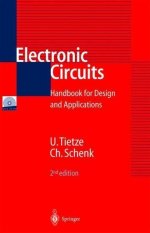The actually reason therefore is the wording in the header which should actually define the topic precisely. Unfortunately that wasn't successful here.🤦♂️
Here we go again.
Mods, please close this thread. It serves no purpose and brings nothing new to the table.
Therefore, this should be reformulated by the moderation according to the four different exist NFB versions (VV, CC, VC and CV) instead of closing this thread.
The first letter refers to the input (V=Voltage control = high impedance input, C=Current control = low impedance)
and the second letter to the output (V=Voltage output = low impedance output, C=Current controlled output = high impedance output).
in colloquial English there are the usual terms "normal" (VV e. g. µA741 or NE5534), "current conveyor" (CC - e. g. AD844/846)) "transconductance" (CV e. g. LM13700) and "transimpedance" (VC, e. g. TAA761), if I recall right.
check out this basic German's articles:
https://silo.tips/download/14-aufbau-und-funktionsweise-eines-operationsverstrkers
https://de.wikipedia.org/wiki/Operationsverstärker
This I have read some time ago in this book:
Tietze Schenk Halbleiterschaltungstechnik (in German).
English Version of this book: Electronic Circuits: Handbook for Design and Application - go to the attachment for a cover image.
Check out here the chapter "Operational Amplifier's"
Attachments
tiefbassuebertr
I choose this title because of the blur of the expression "current feedback".
You know what happened then. It began to define what controls the result.
Various interpretations about feedback followed, which explains the title I choosed
for this thread... which has been quite controversial.
I plan to open a new thread soon, on a possible interpretation of feedback.
Being author of the start of the thread, I won't be happy if the header would be changed by the moderation.The actually reason therefore is the wording in the header which should actually define the topic precisely. Unfortunately that wasn't successful here.
I choose this title because of the blur of the expression "current feedback".
"Current feedback" used to define what is controlled until 1980.NFB versions (VV, CC, VC and CV) [...]
The first letter refers to the input (V=Voltage control = high impedance input, C=Current control = low impedance)
and the second letter to the output (V=Voltage output = low impedance output, C=Current controlled output = high impedance output).
You know what happened then. It began to define what controls the result.
Various interpretations about feedback followed, which explains the title I choosed
for this thread... which has been quite controversial.
I plan to open a new thread soon, on a possible interpretation of feedback.
Last edited:
The problem seems there is no reconciliation of R, as if R can only be zero or infinite in defining VV,CC,VC and CV. It is not enough to simply suggest devices that fall in the middle of the band, rather what defines the thresholds in the transitions from one to another. Unless there exists some clear lines, whereupon black boxes can be determined to what category they belong (an apparent object promoted by CPaul), this appears a hopelessly foolish discussion.
The usefulness in the descriptors is to promote an expectation of a topology for further examination to determine the potential usefulness of such a device in an application.
The usefulness in the descriptors is to promote an expectation of a topology for further examination to determine the potential usefulness of such a device in an application.
Last edited:
